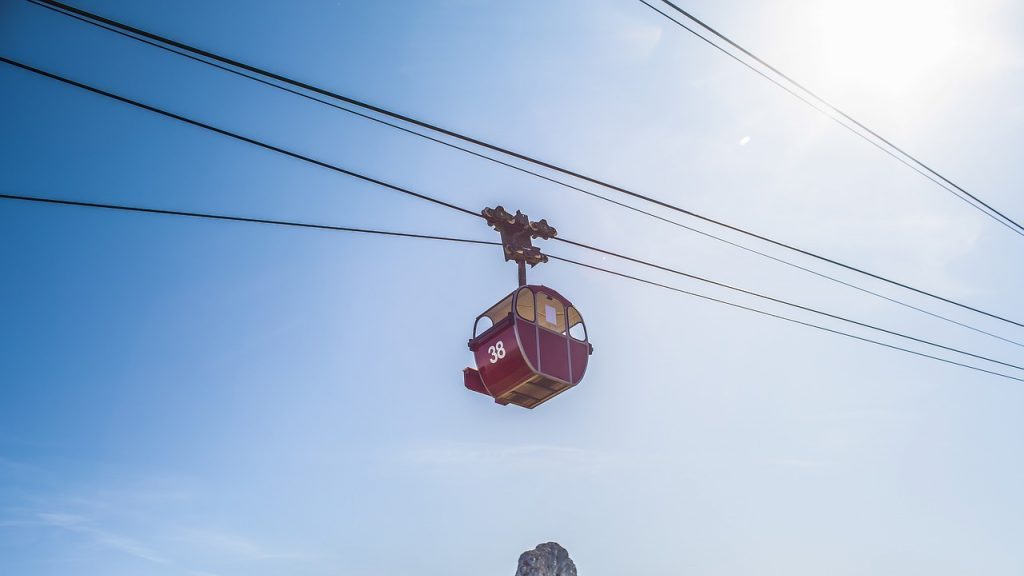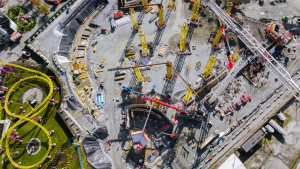Edmonton isn’t known for its mountains and ski hills, but a gondola proposal could be a solution to at least part of its ongoing traffic woes.
The $100 million Prairie Sky Gondola project is a proposal being put forward by a group of civic-minded Edmontonians to build a unique transit system over the North Saskatchewan River.
The project would be built entirely with private capital with up to 25 per cent of the shares offered to Edmonton residents. It’s come forward almost in a unique Albertan-manner, driven by an industry-sponsored public competition to come up with innovative ideas for the city.
The project’s leader, Jeffrey Hansen-Carlson, who is also director of business development at EllisDon in Edmonton, says what started as a winning idea has grown into a tangible concept.
“I started the Edmonton Project and we got this idea last spring and now we’ve got 20 high profile and expert people in an organization to move it forward,” he says.
The Prairie Sky project board is made up of C-level executives from Edmonton’s biggest companies along with real estate developers, architects, engineers and designers, he says.
The group has the support of the Downtown Business Association, Old Strathcona Business Association, River Valley Alliance, French cable transport contractor LSD and local Triovest Realty Advisors and the landowner of ATB Place (including the former Telus Plaza).
Edmonton has approved $100,000 for a feasibility study and the project goes to full council in October.
“At the same time we were coming up with this, a 42-page report went to council suggesting the same thing along almost the same route,” he says. “So it has some momentum.”
The gondola could handle up to 6,000 passengers an hour, running year round and could be folded into the Edmonton transit system as an option to connect with other surface routes.
Crossing Edmonton’s River Valley it would connect the older part of Edmonton’s Strathcona Market to the redevelopment area of Rossdale south of the downtown core. The service would be faster than driving.
“The important thing is that this is for Edmontonians to use,” he says. “It’s not a tourist attraction, though it will be that as well, but that’s not the primary model.”
Station frequency and locations will have to be agreed on and there’s lots more work to be done, he says.
“Everyone involved has a long list they are working through,” he says. “We have a fantastic relationship with the mayor’s office. We have institutional investors interested in coming on board because this project is financially viable without public subsidy.”
There are some design and engineering challenges, such as Edmonton’s winds which can gust up to 100 km/h and the climate.
“There’s a lot of technology in these vehicles,” Hansen-Carlson says. “They can function in ice and wind safely.”
While gondolas are common on ski hills, they’re also a common form of urban transportation around the world.
There aren’t many examples in North America, he says, though the Portland Arial Tram is the closest, covering about 1.5 miles in a three-minute ride that includes a vertical exchange of 500 feet covering two stations. The US$57 million project opened in December 2006 and carried its one-millionth passenger less than year later.
A gondola has also been proposed for the Lower Mainland in British Columbia as an alternative to a rapid transit tunnel under the Burrard Inlet. The 3.4-kilometre crossing would be less than Whistler’s Peak2Peak gondola which runs 4.4 kilometres. B.C. also has the Sea-to-Sky gondola but it’s a tourist sightseeing vehicle in Squamish.
In 2016, a Don Valley Cable Car route was proposed to carry passengers from the top of the Don Valley ravine at Broadview Avenue to the Evergreen Brick Works in Toronto but again it was not designed as a commuter solution.
“Prairie Sky is a credible, viable project with some very smart people on board,” says Hansen-Carlson. “There are gondolas all around the world and it works. We’ve had people from South Korea and other places come and look at the site and they say it can be done.”











Recent Comments
comments for this post are closed